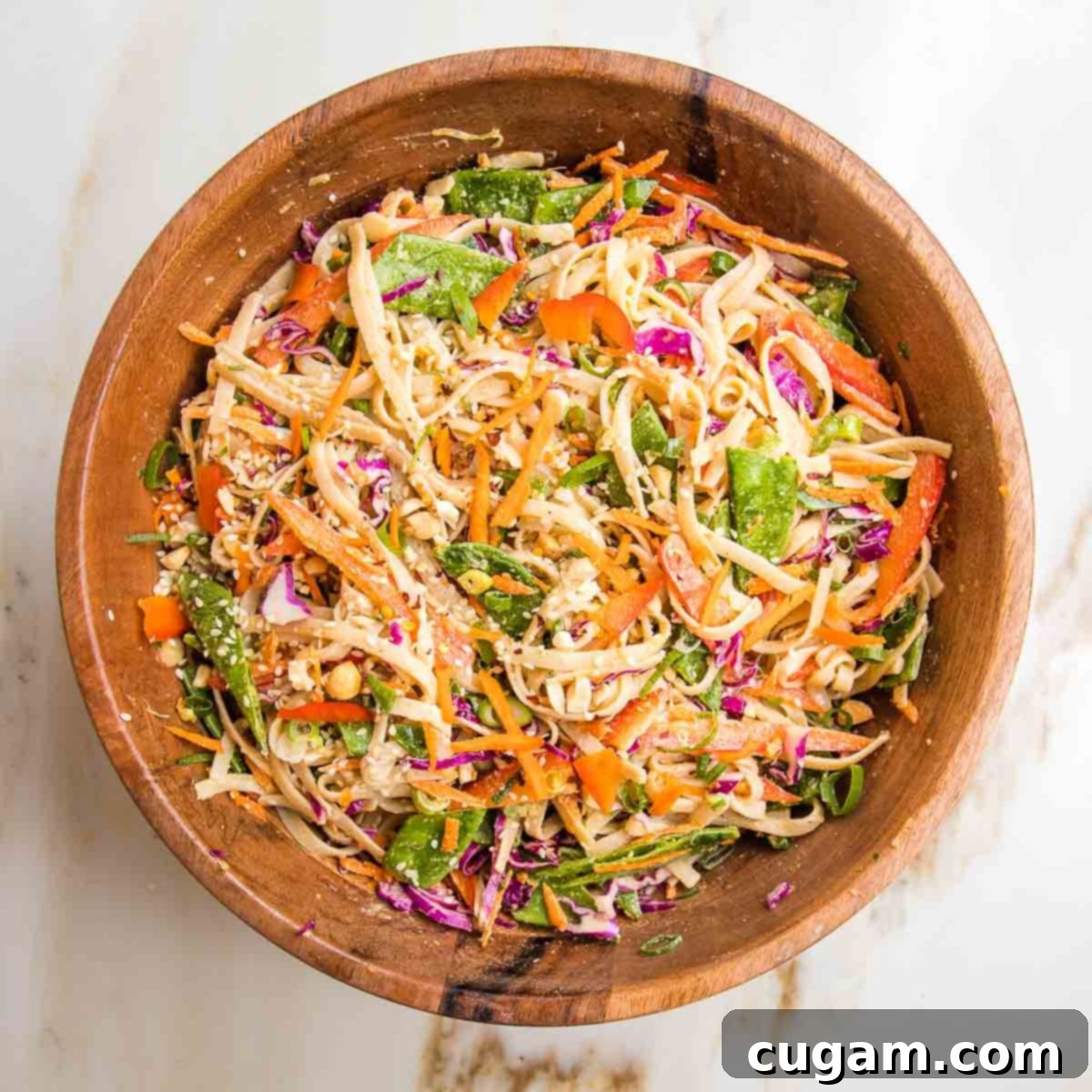Easy & Healthy Cold Sesame Noodles with Tahini Sauce: A Quick Vegan & Gluten-Free Recipe
Discover the ultimate weeknight hero: these incredibly easy and healthy Cold Sesame Noodles with Tahini Sauce. Bursting with vibrant, crunchy vegetables and coated in a rich, savory, and slightly spicy tahini dressing, this dish comes together in just about 20 minutes. It’s the perfect solution for a quick dinner, a satisfying lunch, or a crowd-pleasing side dish that effortlessly caters to various dietary preferences, including vegan and gluten-free diets. Get ready to add this delicious, fiber-packed recipe to your regular rotation!
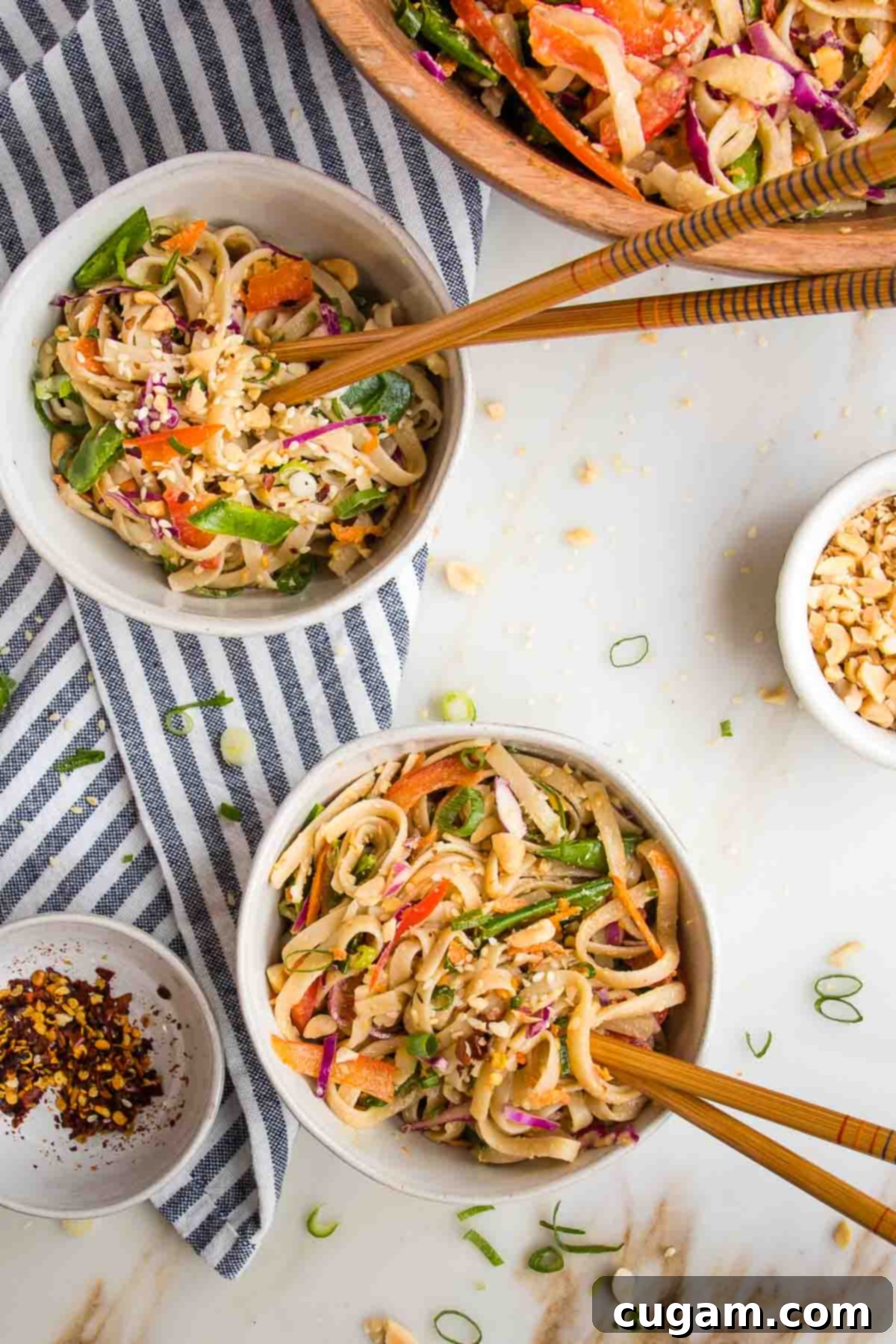
This recipe has been updated from the original posted July 6, 2022.
[feast_advanced_jump_to]
Your Go-To Recipe for Quick, Delicious Meals
If you’re looking for a delightful and effortless meal solution tonight, look no further! This simple sesame noodle recipe relies on readily available pantry ingredients and can be on your table in under 30 minutes. We recently enjoyed these flavorful tahini noodles for dinner, and the leftovers made for an equally fantastic and eagerly anticipated lunch. Their versatility makes them ideal for various occasions, from casual weeknight meals to more elaborate gatherings.
Featuring wholesome gluten-free brown rice noodles and a medley of crisp, colorful vegetables, all coated in a rich and spicy tahini sauce, these noodles are a fantastic option for potlucks, picnics, beach outings, or perfectly packed lunches. Not only are they incredibly delicious, but they’re also packed with essential fiber and an abundance of healthy vegetables, making them a truly nourishing choice. These garlic-infused sesame noodles are delightful served warm, at room temperature, or even better, chilled overnight as cold sesame noodles with tahini. For a complete meatless meal, consider adding a plant-based protein like shelled edamame to elevate its nutritional value and make it even more filling.
Looking for more quick and easy healthy plant-based dinner ideas? Explore these other fantastic recipes: vegan ground beef, sheet pan veggie fajitas, no yeast flatbread, vegan taco soup, or a simple teriyaki stir fry.
Why You’ll Fall in Love with These Cold Sesame Noodles:
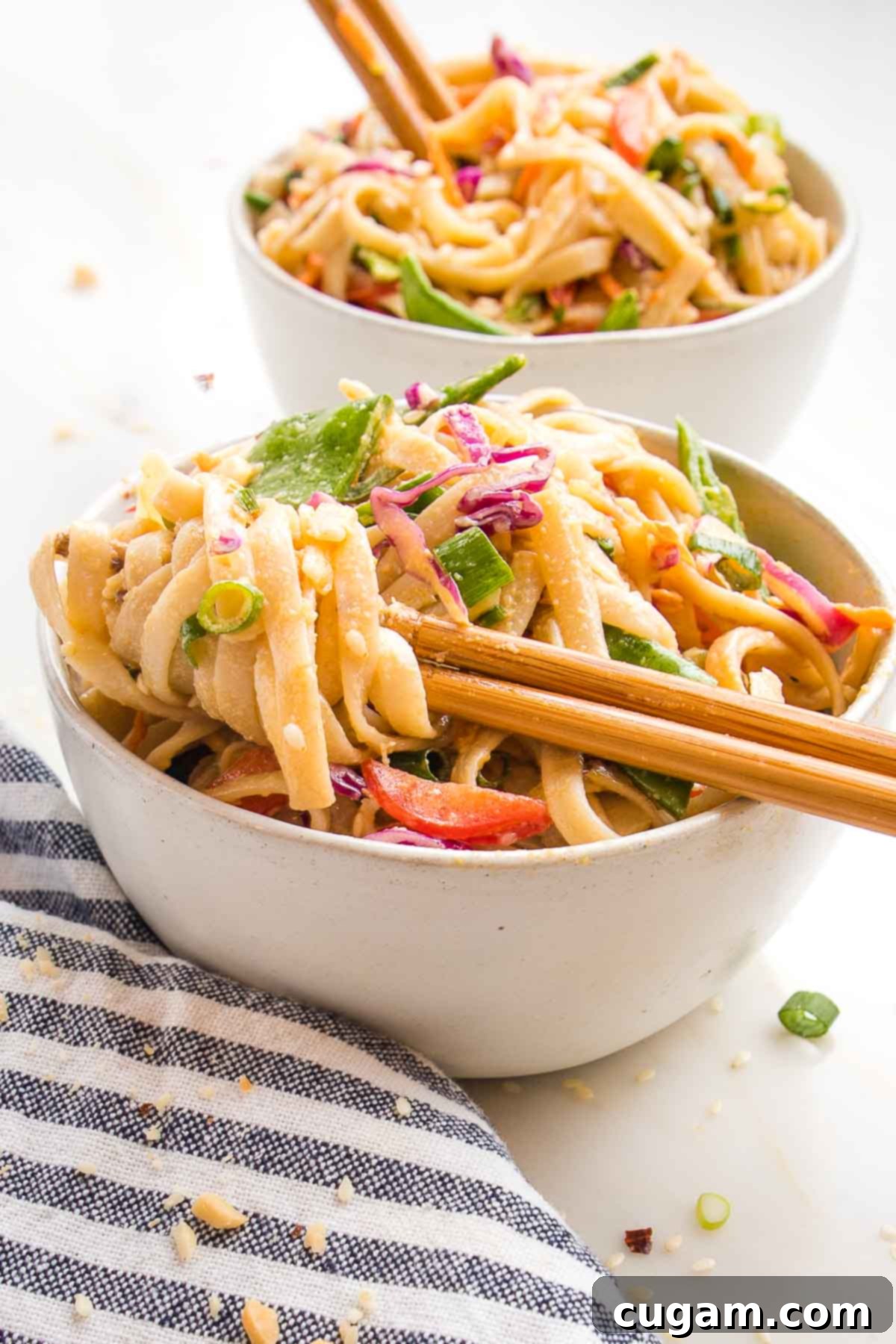
- Effortlessly Quick: This entire meal is ready in under 30 minutes, making it ideal for those busy weeknights when time is of the essence but you still crave a homemade, flavorful dish.
- Irresistibly Delicious: The star of the show is undoubtedly the tahini sauce. It delivers a perfect balance of umami, savory, and slightly sweet flavors, hitting all the notes you’d expect from the best sesame peanut noodles, even without the peanuts!
- Light Yet Satisfying: Despite being packed with flavor and texture, these noodles feel wonderfully light. They’re satisfying enough to be a main course but won’t leave you feeling overly heavy.
- Nutrient-Dense Goodness: Loaded with a colorful array of fresh vegetables and the healthy fats from tahini, this recipe is a fantastic source of fiber, promoting a happy and healthy gut.
- Pantry-Friendly Ingredients: Most of what you need for this recipe are common pantry staples, alongside a few fresh vegetables, making it easy to whip up anytime.
- Excellent for Meal Prep: These cold sesame noodles taste even better the next day, as the flavors meld and deepen. This makes them a perfect candidate for meal prepping, ensuring healthy lunches or dinners are ready to go throughout the week.
- Healthy Comfort Food: It’s the kind of dish that warms your soul while nourishing your body, proving that comfort food can indeed be incredibly healthy.
- Versatile Serving Options: Whether you need a flavorful side dish for a larger meal, a light yet filling lunch, or a complete plant-based dinner, these noodles fit the bill perfectly.
Key Ingredients and Smart Substitutions for Your Sesame Noodles
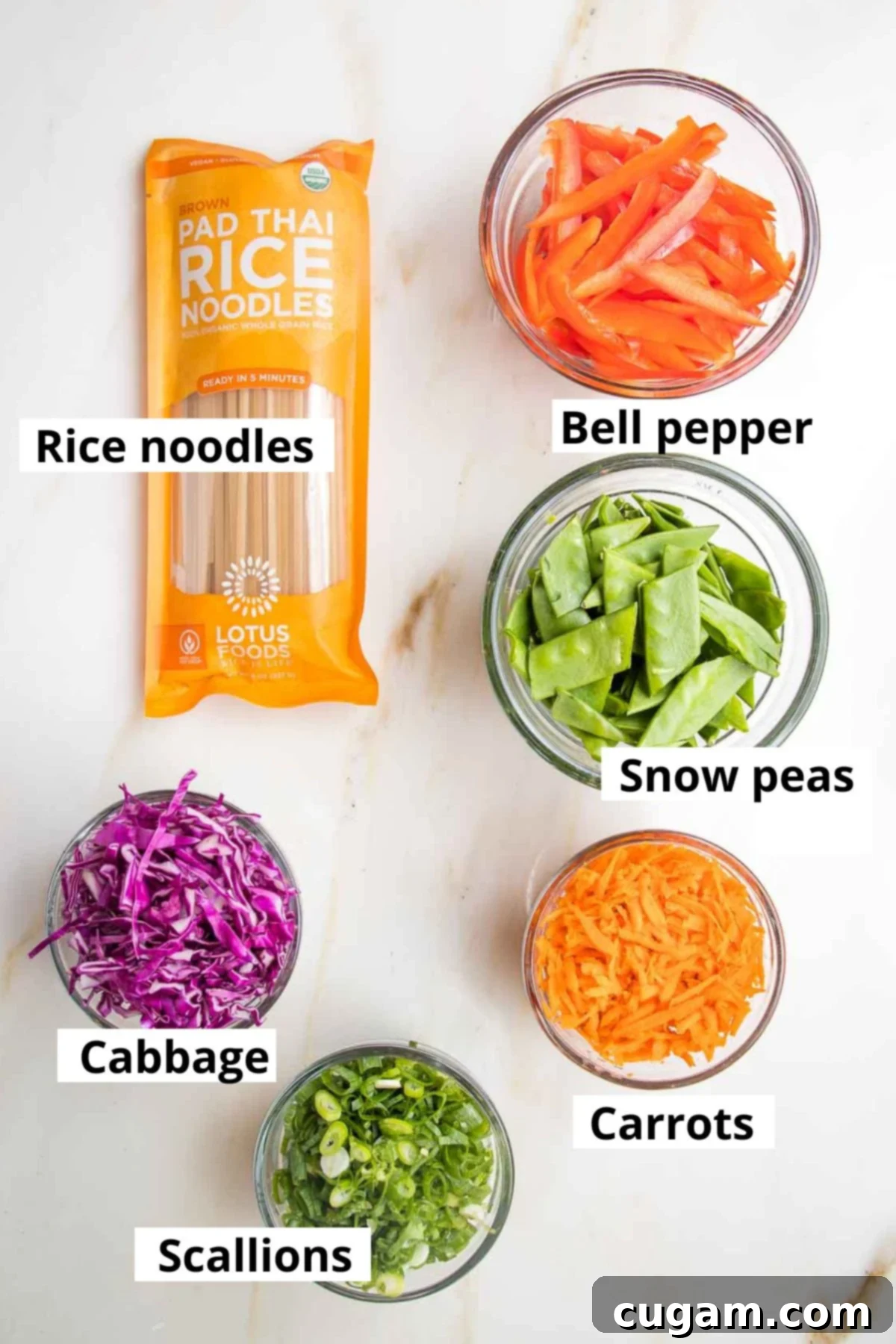
Crafting the perfect cold sesame noodles starts with selecting the right ingredients. Here’s a detailed look at what you’ll need and how to make clever substitutions:
- Noodles: The foundation of our dish! We used gluten-free brown rice Pad Thai noodles for their excellent texture and dietary benefits. However, feel free to use your favorite noodle type that suits your dietary needs. Great alternatives include whole wheat spaghetti, other types of brown rice noodles, thick udon noodles, or even regular pasta shapes like fettuccine or linguine. The key is to achieve that perfect al dente bite.
- Cabbage: We chose vibrant purple cabbage for its beautiful color and satisfying crunch, which adds a lovely visual appeal to the dish. Green cabbage or thinly sliced fennel are excellent substitutes if you prefer a milder flavor or different hue.
- Carrots: Freshly shredded carrots provide natural sweetness and a delightful texture. For ease, use a box grateror a julienne vegetable peeler. Alternatively, save time by purchasing pre-shredded carrots.
- Bell Pepper: Sliced red bell peppers not only add a pop of color but also a sweet, crisp bite that complements the savory sauce beautifully. Any color bell pepper will work here, or you could substitute with thinly sliced Persian cucumbers for a refreshing twist.
- Green Onions: These provide a mild, oniony flavor and a fresh garnish. Diced purple onion, spring salad onions, or chives can be used as alternatives to achieve a similar aromatic touch.
- Snow Peas: Their tender-crisp texture and subtle sweetness are fantastic in this dish. Sugar snap peas make an excellent and widely available substitute.
- EXTRA VEGGIES: Feel free to boost the nutritional density and volume of this recipe by incorporating even more fresh or lightly cooked vegetables. Great choices include finely julienned cucumber, thinly sliced radish for a peppery kick, shelled edamame for protein, tender bok choy, or additional sugar snap peas. For a warm element, quickly sauté broccoli florets, cauliflower, or sliced mushrooms in a large skillet with a splash of sesame oil for a couple of minutes before adding to the noodles.
The Star of the Show: Creamy Tahini Sauce for Sesame Noodles
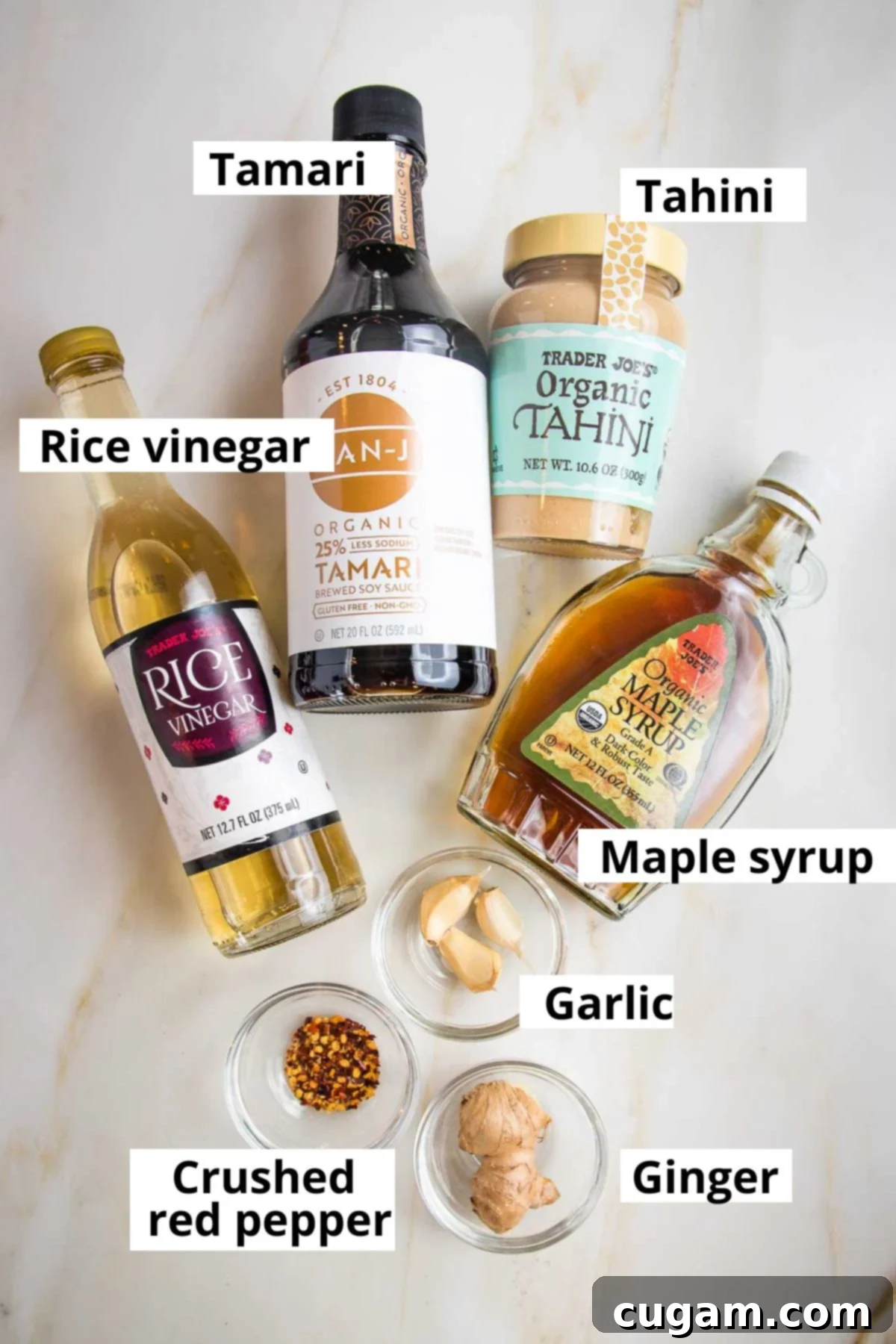
This rich and creamy tahini sauce is what truly brings our cold sesame noodles to life. Each ingredient plays a crucial role in creating a harmonious blend of flavors:
- Tahini: The heart of the sesame flavor! Choose a high-quality tahini that contains only ground sesame seeds for the purest taste. If you opt for Chinese sesame paste, which is often made from roasted seeds, you might need to add a bit more warm water to achieve a smooth, pourable consistency. For those with sesame allergies, peanut butter or almond butter can be used as a creamy, nutty alternative. If you have extra tahini, be sure to check out these delicious Vegan Recipes with Tahini!
- Tamari: We prefer low-sodium tamari, which is naturally wheat-free, making this recipe gluten-friendly. Low-sodium soy sauce can be used if gluten isn’t a concern, or coconut aminos offer a soy-free alternative with a similar savory depth.
- Rice Vinegar: Unseasoned rice vinegar adds a bright, tangy balance to the richness of the tahini. Mirin (sweet rice cooking wine), white wine vinegar, or fresh lime juice are all excellent substitutes that provide a similar acidic lift.
- Maple Syrup: A touch of natural sweetness from maple syrup perfectly balances the spicy and savory notes of the sauce. Honey or date syrup can be used, or you can omit it entirely if you prefer a less sweet profile.
- Garlic: Fresh garlic, finely zested or minced, contributes a pungent, aromatic depth that is essential to the flavor profile. If fresh isn’t available, a quarter teaspoon of garlic powder (not garlic salt) or a teaspoon of garlic oil can be used.
- Ginger: Freshly grated ginger adds a warm, zesty, and slightly peppery kick. For convenience, a quarter teaspoon of ground ginger powder can be substituted.
- Crushed Red Pepper Flakes: A quarter teaspoon provides just the right amount of subtle heat. If you crave a spicier sauce, feel free to add an extra pinch of red pepper flakes, cayenne pepper, or a dash of chipotle chili powder for a smoky heat.
How to Make the Best Cold Sesame Noodles: Step-by-Step
Preparing these delightful sesame noodles is a straightforward process, ensuring a delicious meal without fuss. Here’s how to get started:
Cooking the Noodles to Perfection
First, bring a large pot of water to a rolling boil. Add a generous sprinkle of coarse salt – this seasons the noodles from the inside out. Once boiling, add your chosen noodles and reduce the heat to a gentle simmer, just enough to prevent the water from overflowing. Cook the pasta according to the package directions, but with one crucial caveat: begin checking for al dente doneness about 2 minutes before the recommended cooking time. This is incredibly important, especially with gluten-free pasta, to prevent them from becoming mushy or pasty. Al dente noodles will have a slight bite to them, perfect for cold dishes.
Whipping Up the Creamy Sesame Noodle Sauce
While your noodles are cooking, it’s time to prepare the star of the dish: the flavorful tahini sauce. For easy cleanup, measure the tahini directly into a Pyrex measuring cup, then add the remaining sauce ingredients directly into the same cup. This method helps ensure all the tahini is easily incorporated. Use a microplane graterto finely zest your fresh garlic and ginger, unlocking their full aromatic potential.
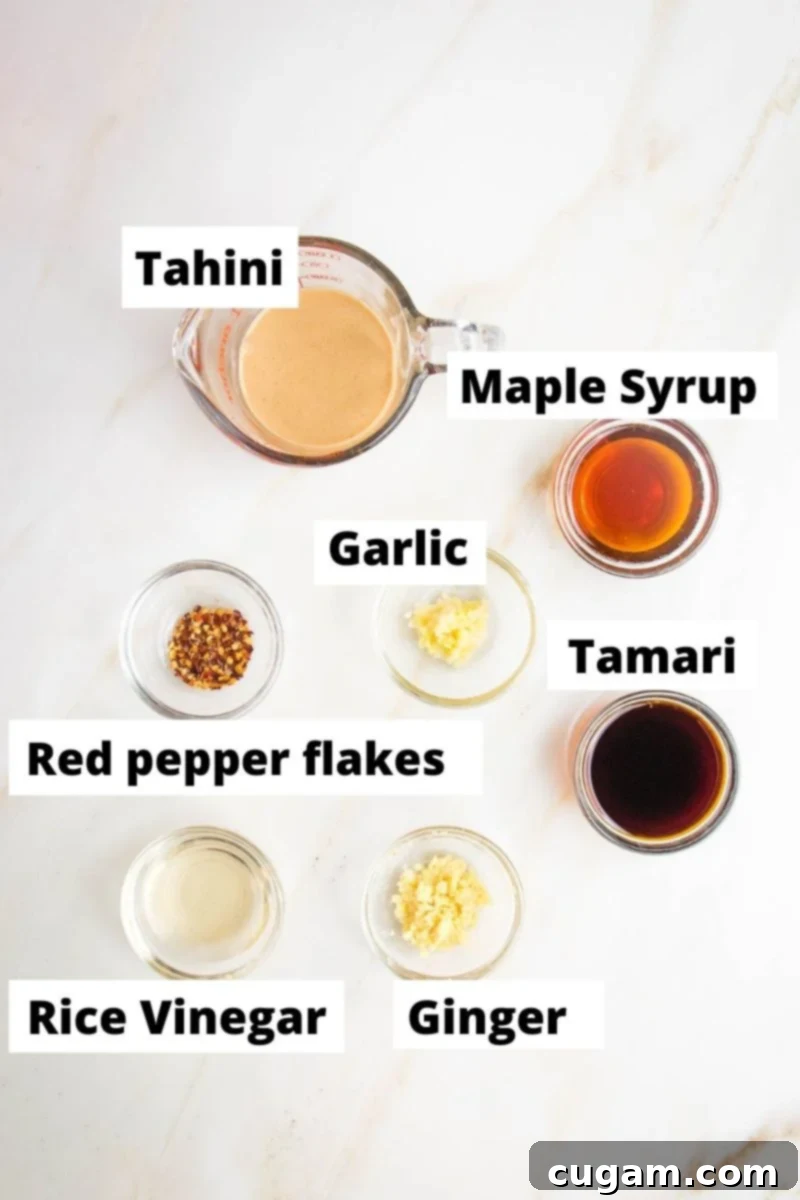
Whisk all the sauce ingredients vigorously until everything is thoroughly combined and smooth. The finished sauce should have a consistency similar to heavy cream – pourable but still rich. If it appears too thick, simply add water, one tablespoon at a time, whisking well after each addition, until you reach the desired texture.
What’s the difference between tahini and sesame paste?
While tahini and Chinese sesame paste are often used interchangeably, there’s a subtle but important distinction. Tahini is typically made from raw, hulled sesame seeds, resulting in a lighter color and a generally runnier consistency, as the natural oils are easily released during grinding. Chinese sesame paste, on the other hand, is usually made from roasted sesame seeds, giving it a darker color, a more intense, nutty flavor, and often a thicker, denser texture.
Preparing the Crisp Vegetables for Sesame Noodles
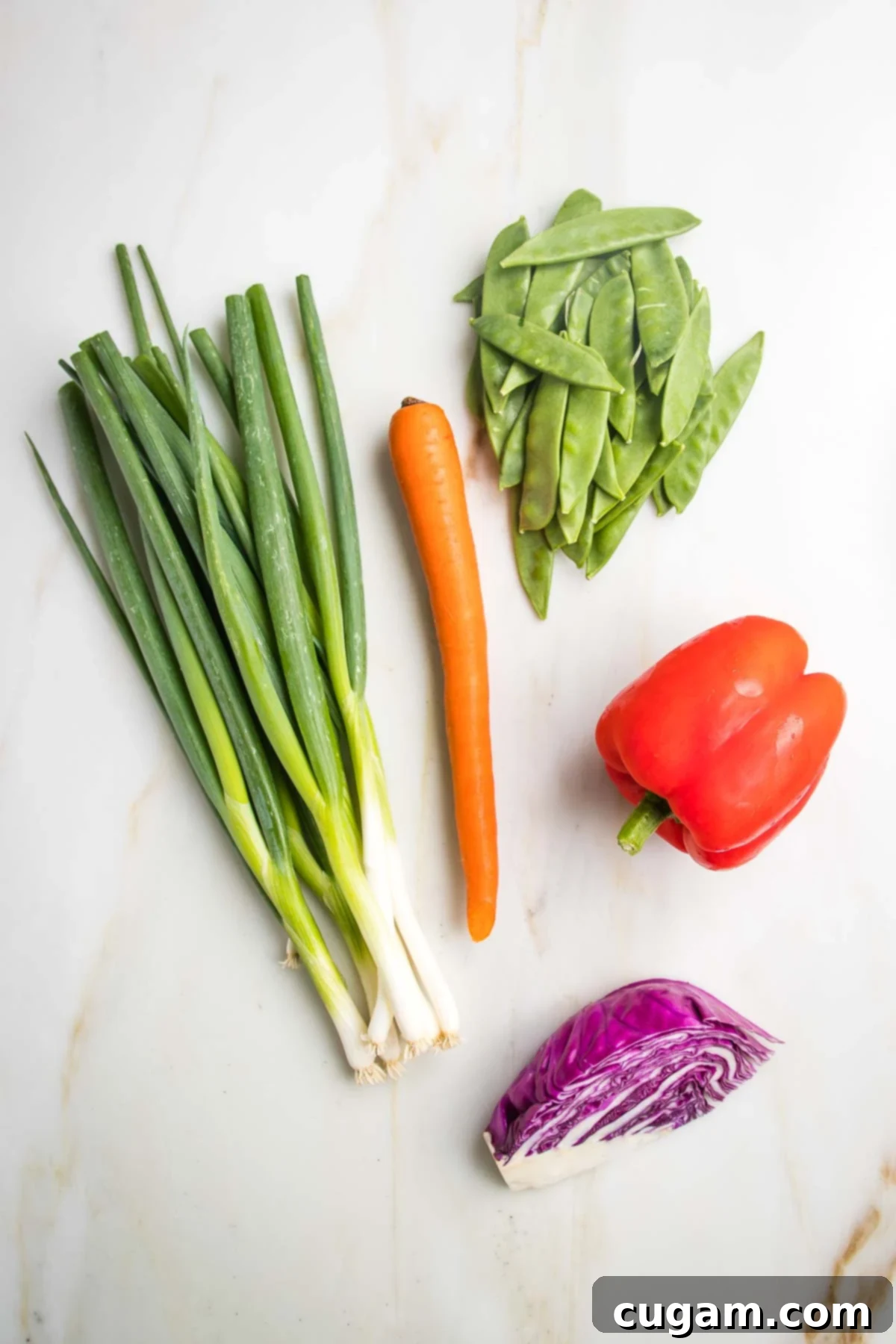
With the tahini dressing set aside, it’s time to prepare your fresh, vibrant vegetables. Uniformly cut vegetables ensure every bite is perfectly balanced in flavor and texture.
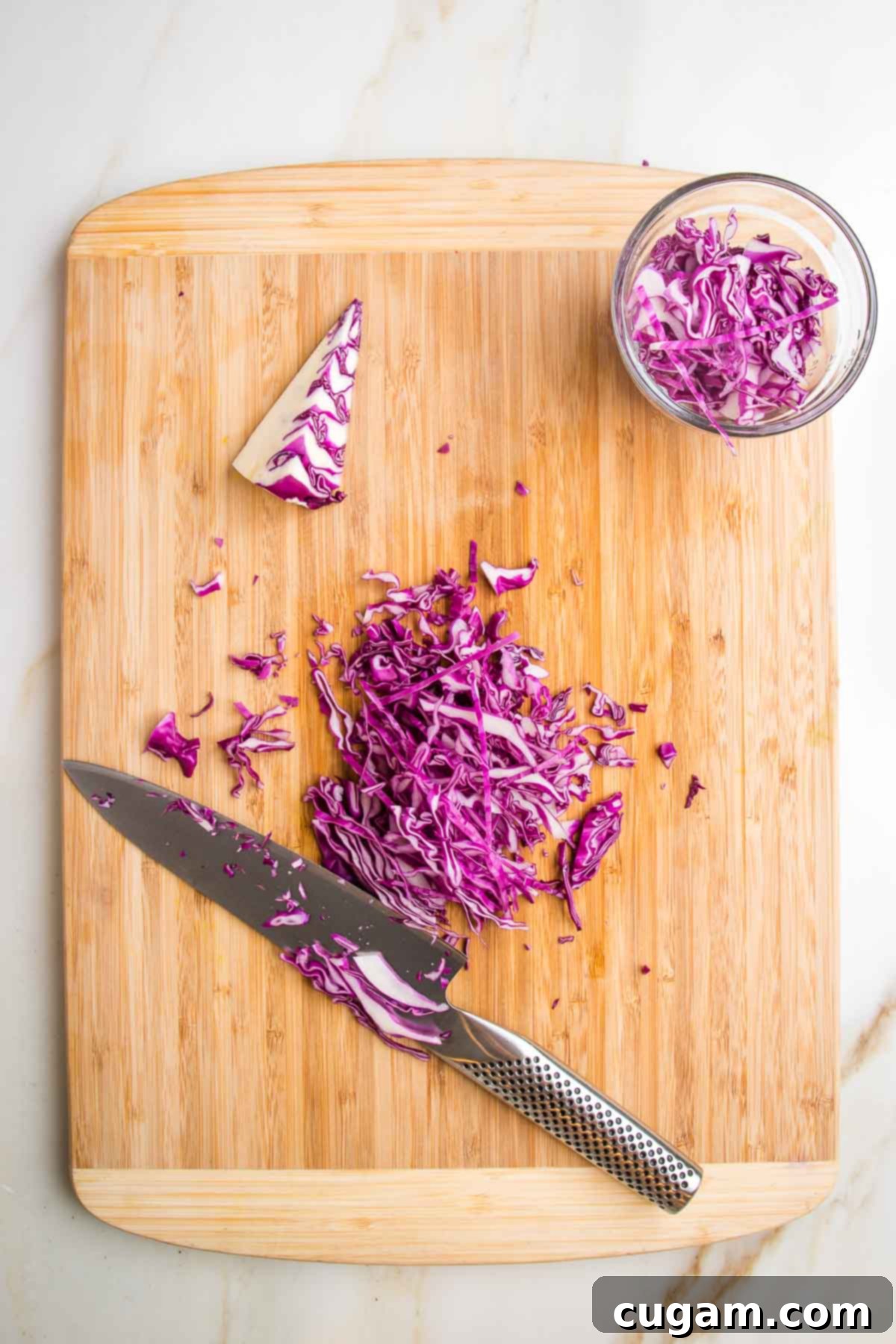
You’ll need approximately one-eighth of a head of cabbage, which should yield about 1 cup when finely chopped. Don’t worry if it’s a bit more or less – the exact amount is flexible and won’t significantly impact the dish.
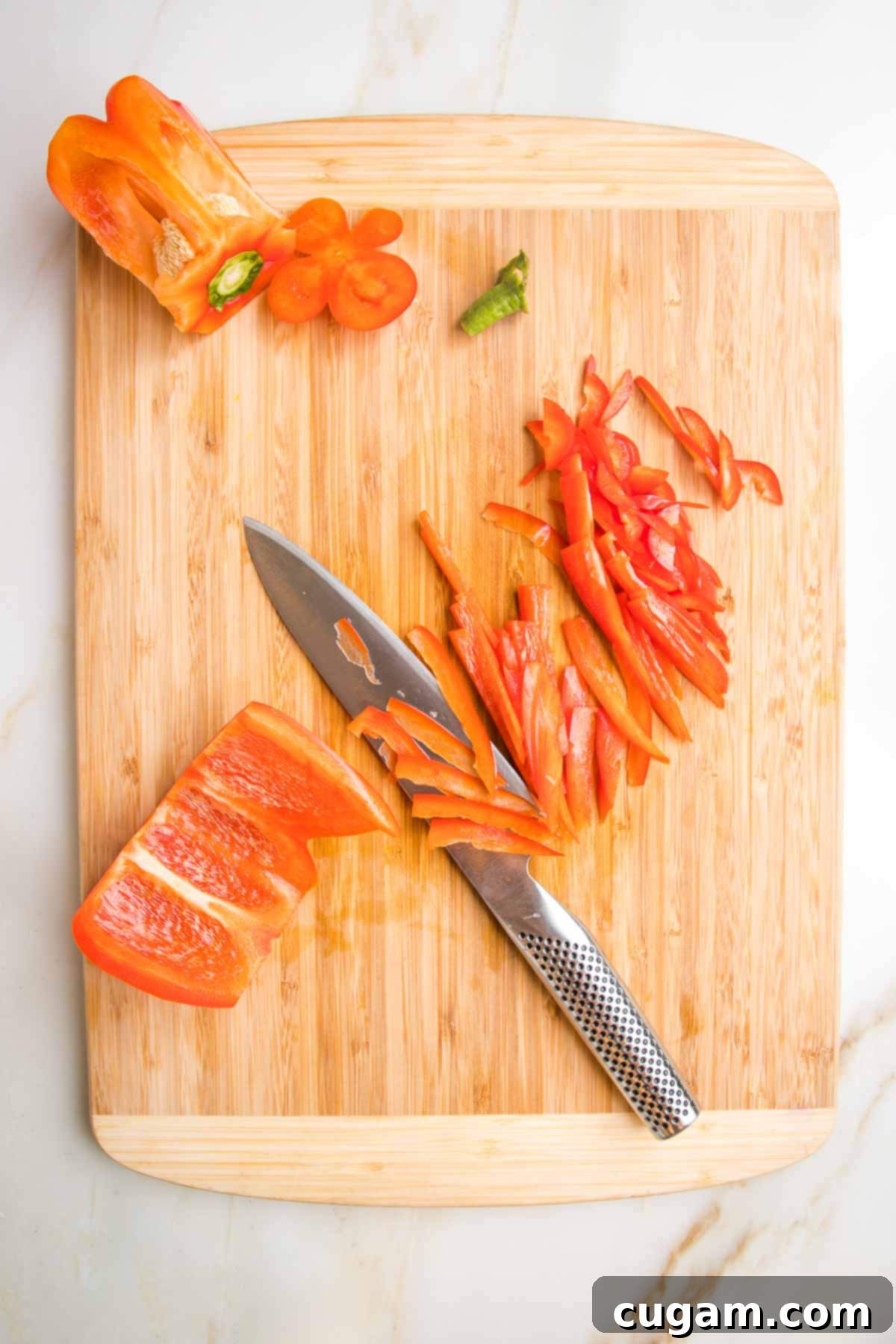
Carefully slice the red bell pepper and green onions into thin, uniform strips. This allows them to integrate well with the noodles and dressing while maintaining their desirable crunch.

Utilize the coarse side of a box graterto shred your carrots finely. This method creates tender strands that blend seamlessly into the noodle dish.
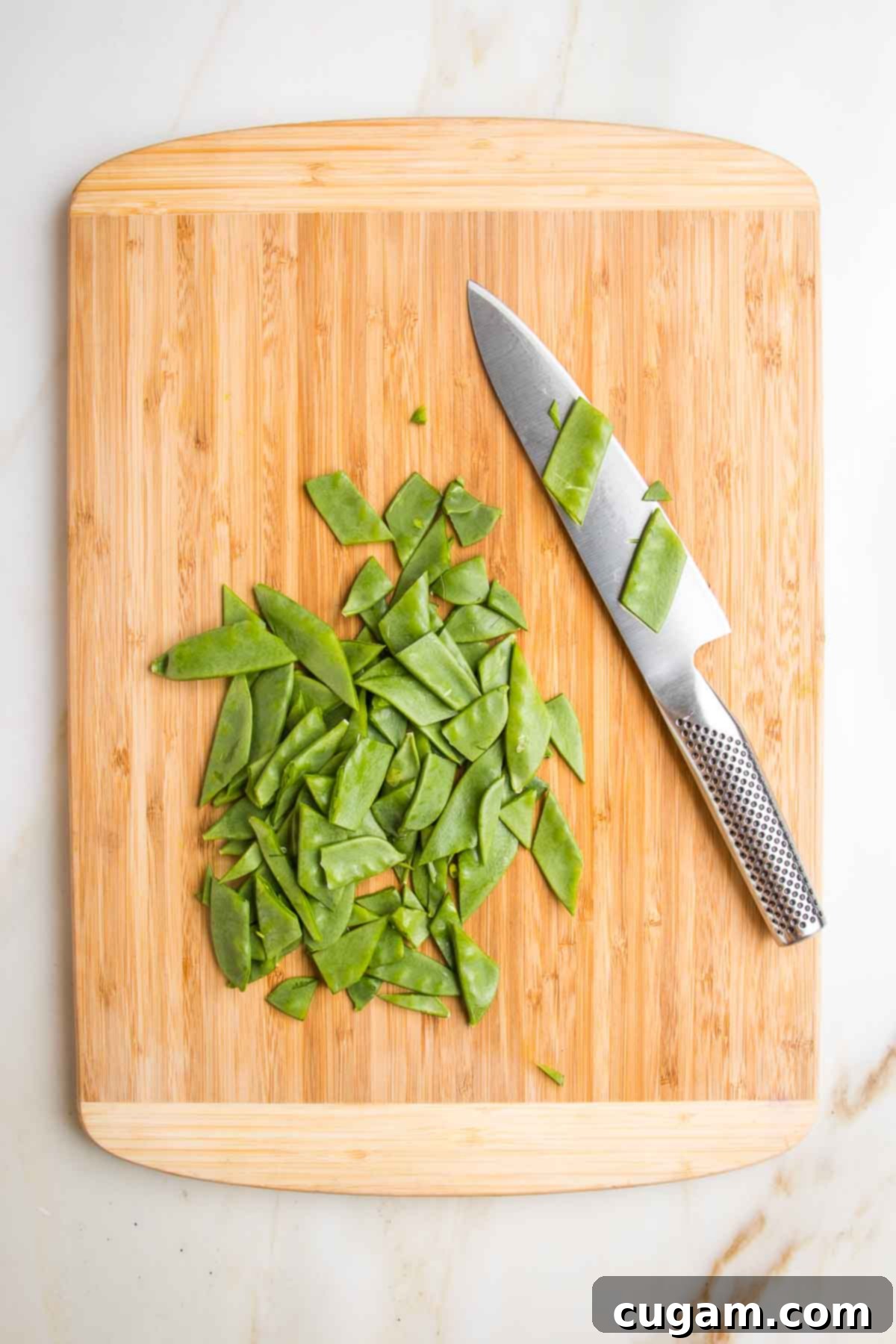
For a beautiful presentation and easier eating, cut the snow peas on the diagonal. This also helps to expose more of their surface area to the flavorful sauce.
Assembling Your Cold Sesame Noodle Masterpiece
Once your noodles are perfectly cooked and your vegetables are prepped, it’s time to bring everything together. When the noodles are done cooking, immediately transfer them to a colander and rinse them thoroughly under cold water. This stops the cooking process and prevents the noodles from sticking together. Transfer the cooled noodles to a large mixing bowl, drizzle with a splash of toasted sesame oil, and toss well to ensure every strand is lightly coated. This extra step further prevents sticking and adds an extra layer of nutty flavor.
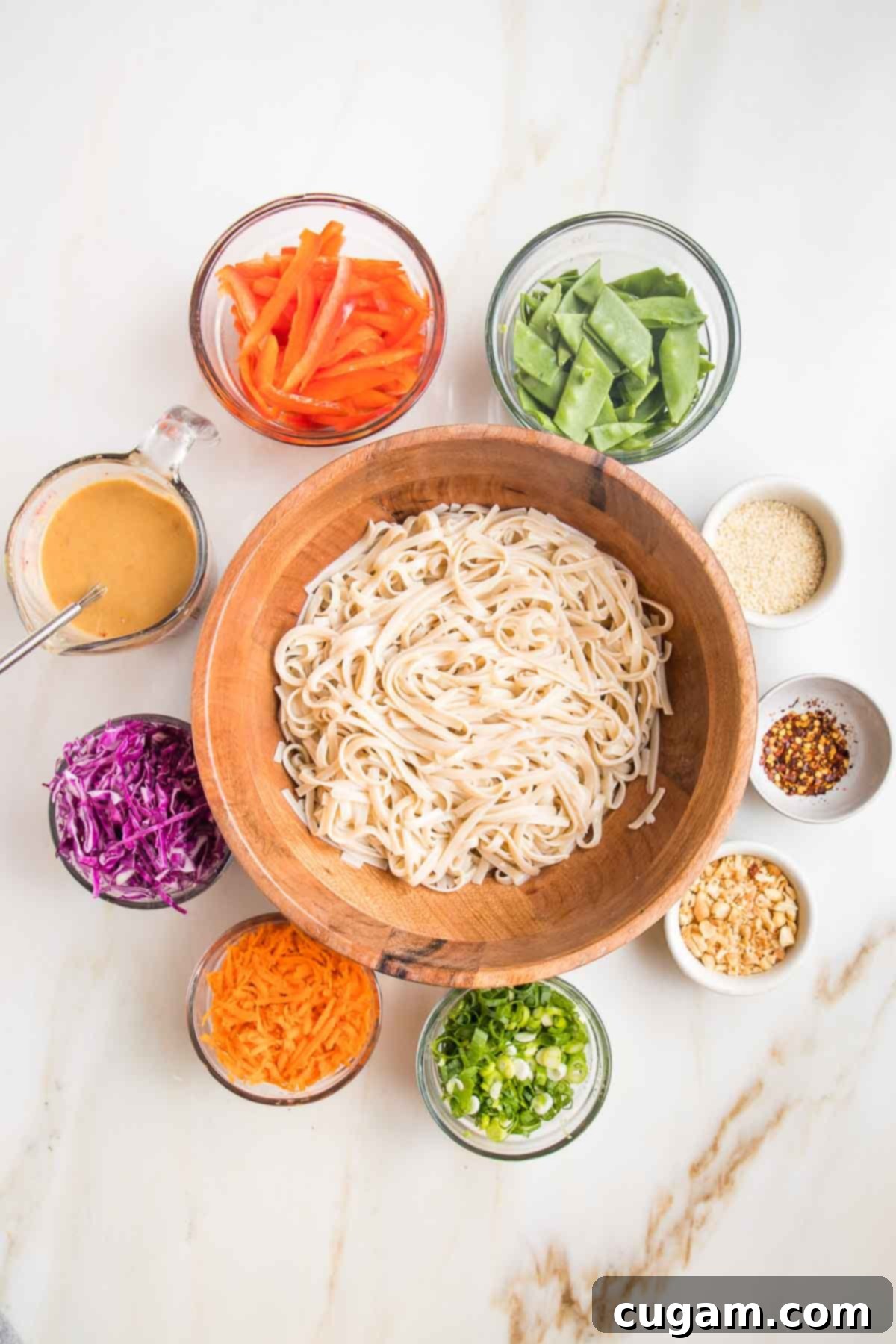
To the bowl with the prepared sesame noodles, add all your vibrant, shredded vegetables: the crisp carrots, thinly sliced green onions, purple cabbage, red bell peppers, and snow peas. Give the tahini dressing another quick whisk. As it may have thickened while sitting, check its consistency and add an additional tablespoon or two of water if needed to make it pourable again. Pour about half of the sesame noodle sauce over the noodles and vegetables, then toss everything together thoroughly until evenly coated.
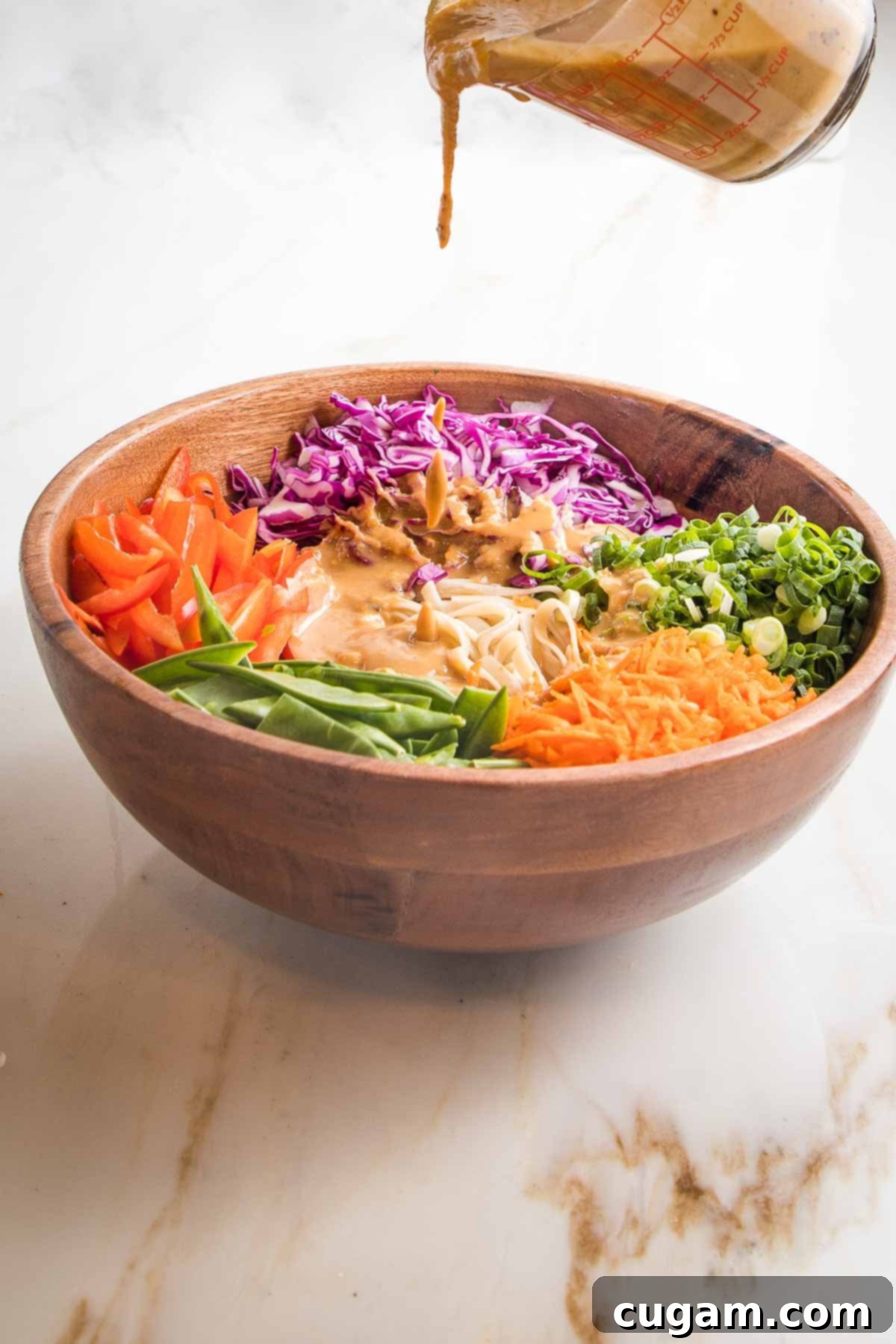
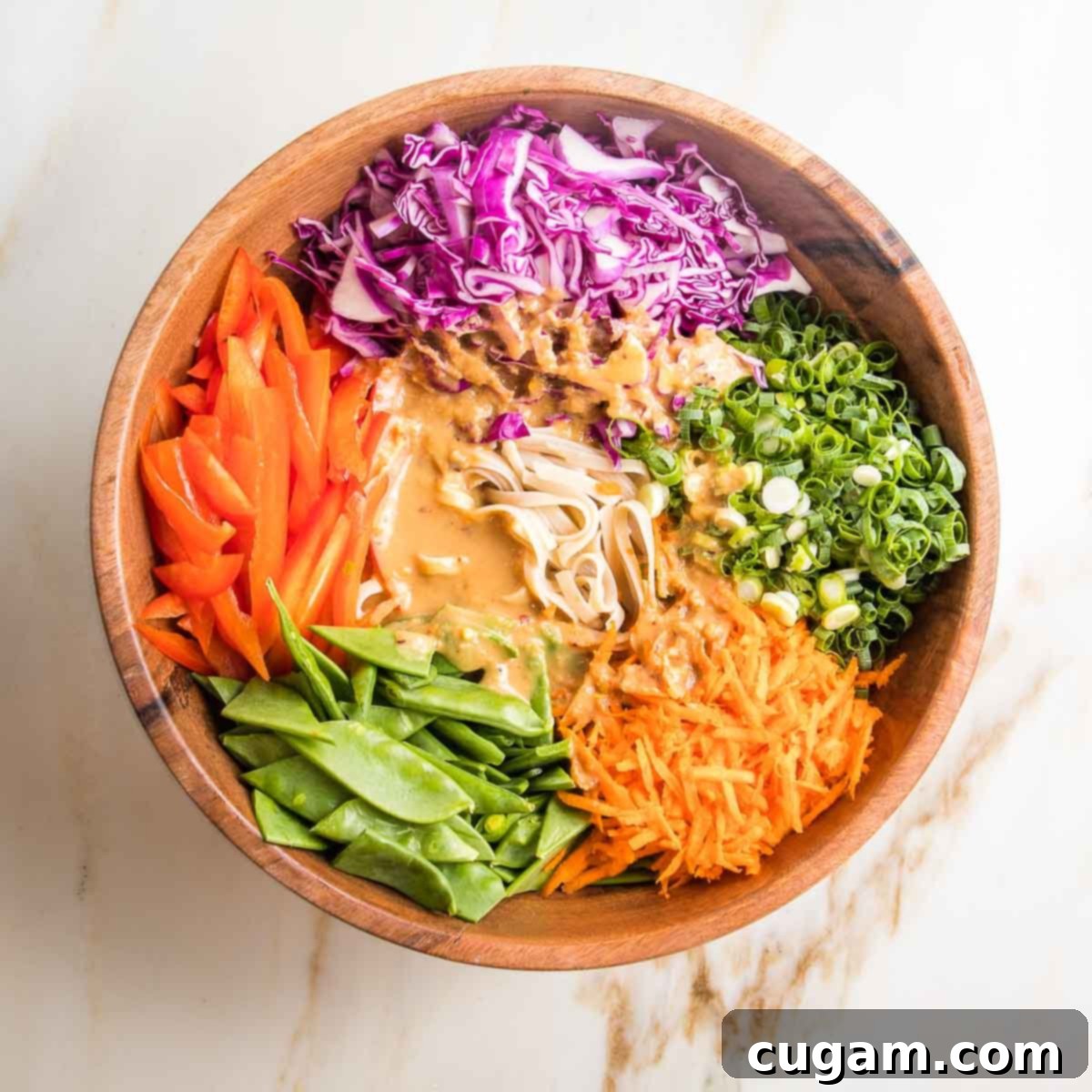
Taste and adjust, adding more dressing as desired, and mix again to ensure every component is generously coated. The goal is a perfectly balanced and flavorful noodle dish.
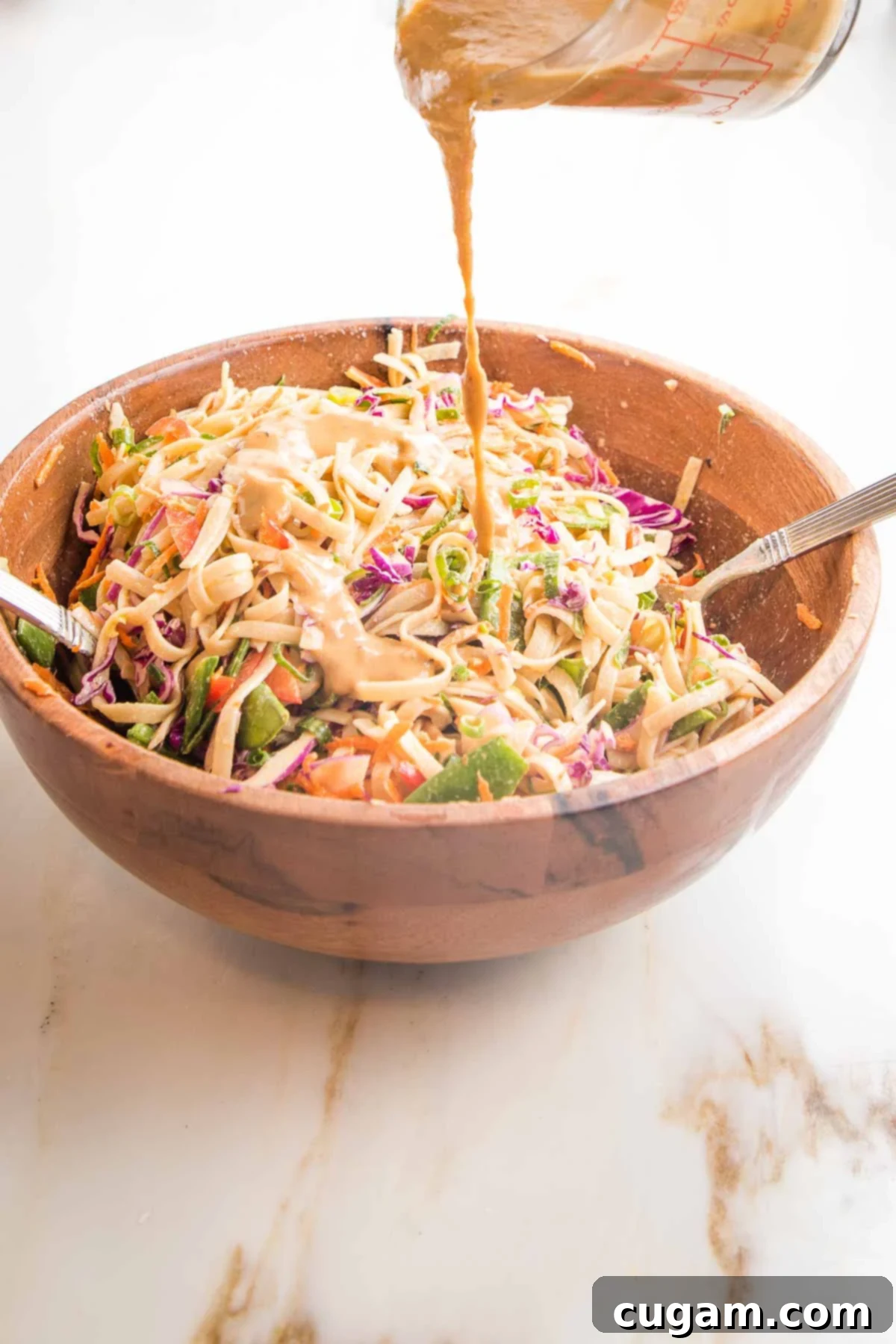
Before serving, sprinkle your favorite garnishes over the sesame noodles. We love toasted sesame seeds for added crunch and nutty flavor, more crushed red pepper for an extra kick, chopped peanuts for texture, and thinly sliced scallions for freshness. A scattering of fresh cilantro also adds a wonderful aromatic touch.
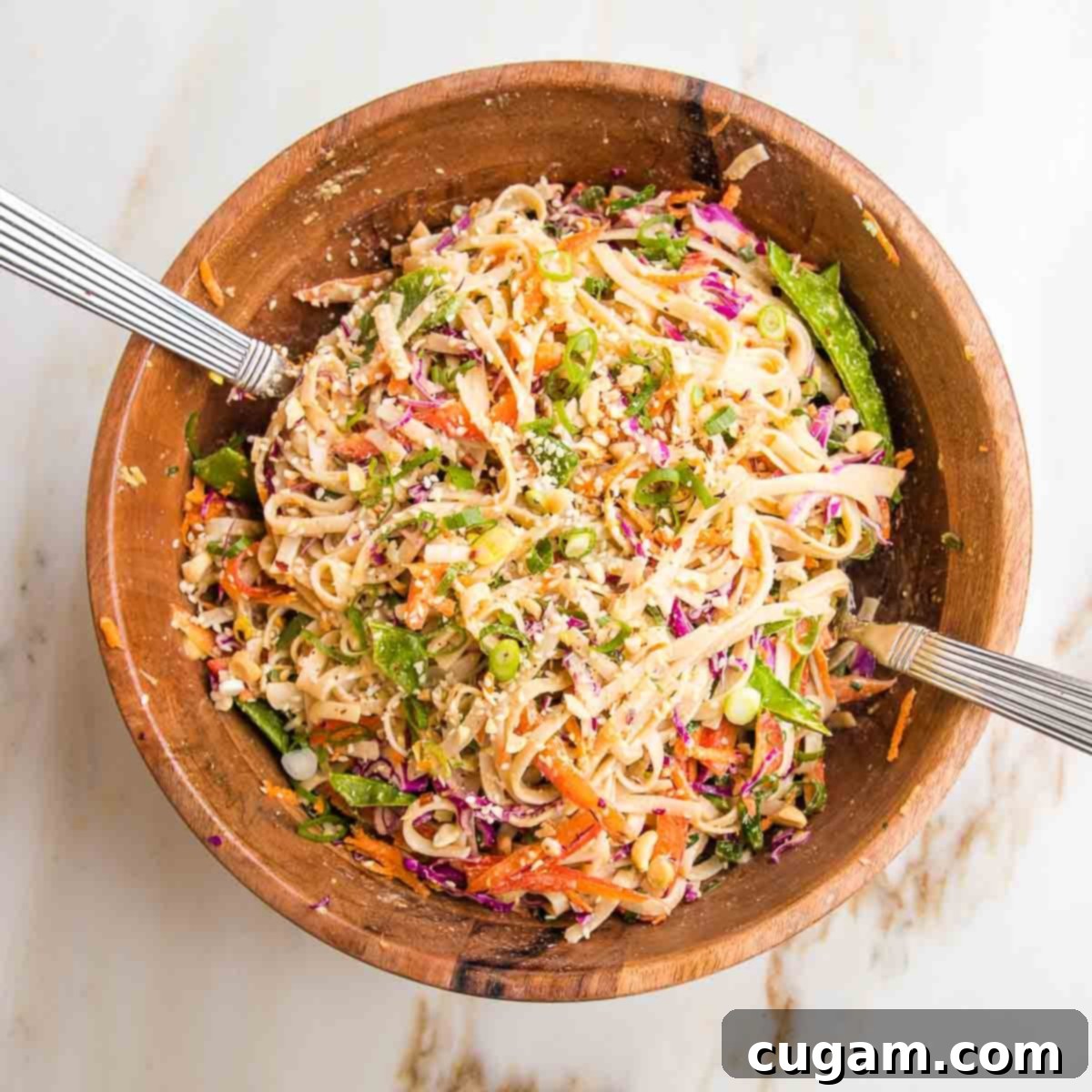
Pro Tips for Perfect Cold Sesame Noodles
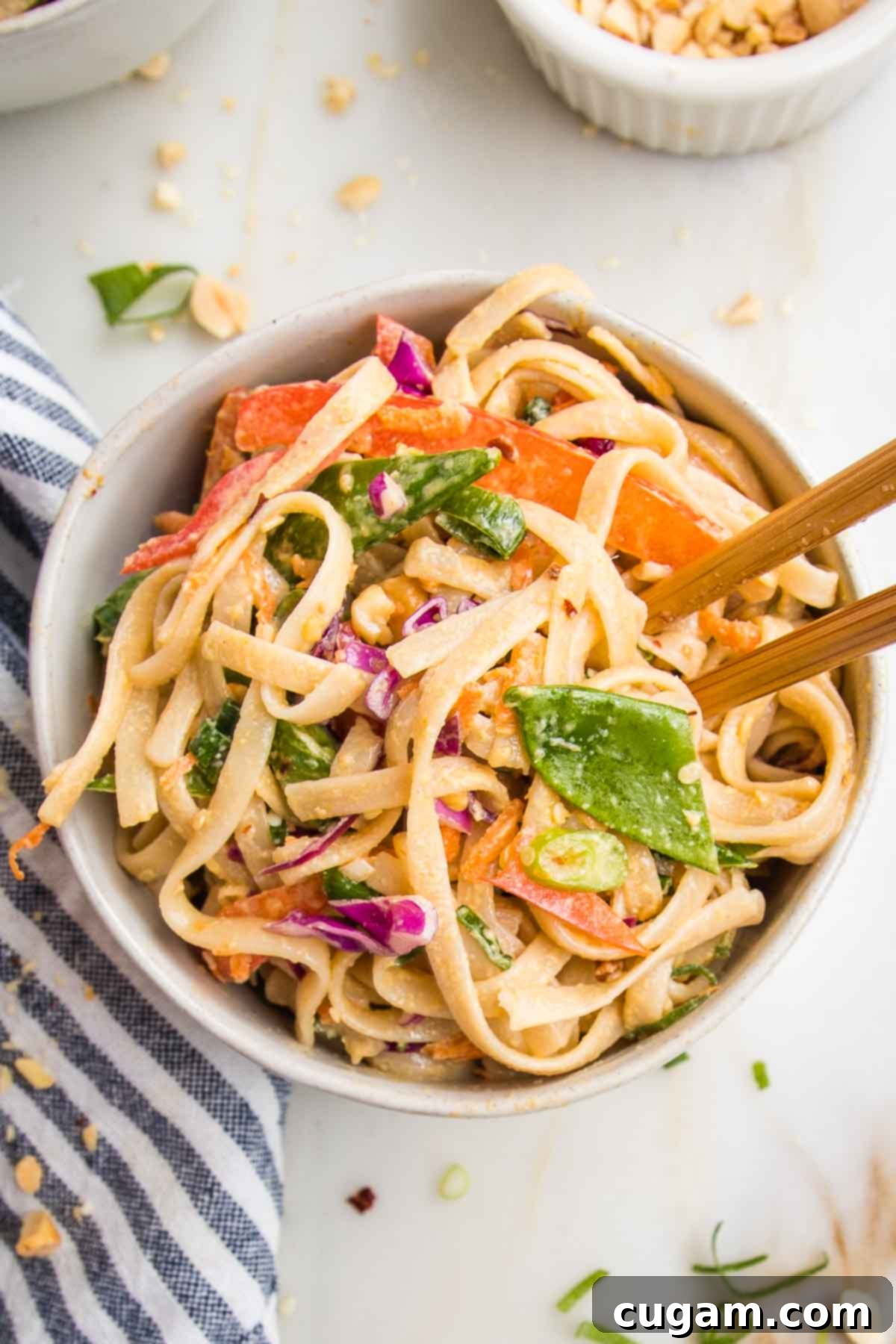
- Tahini Storage Hack: To make stirring easier and ensure a consistent texture, store your unopened jars of tahini upside down in your pantry. When you’re ready to use it, give it a good mix before measuring to emulsify any separated oils.
- The Golden Rule of Noodles: DO NOT OVERCOOK! We cannot stress this enough, especially when using gluten-free pasta. Set a timer to check your noodles for al dente doneness about 2 minutes before the package instructions suggest. Mushy noodles are the nemesis of a great cold pasta salad.
- Boost the Protein: To transform this delightful side into a complete and satisfying meal, simply add some plant-based protein. Excellent choices include shelled edamame, roasted chickpeas, chopped almonds or cashews for extra crunch, or even green peas.
- Serve with Style: For an authentic and fun dining experience, present your cold sesame noodles with a pair of chopsticks. It makes the meal more enjoyable and interactive!
- Garnish Just Before Serving: While the noodles and sauce can be prepped ahead, it’s best to add your garnishes (like toasted sesame seeds, fresh scallions, or cilantro) right before serving. This ensures they retain their fresh flavor and crisp texture. Store the main dish in the fridge until ready.
- Chili Oil Kick: For an extra layer of flavor and a beautiful reddish hue, drizzle a bit of high-quality chili oil over the finished dish, or even mix a teaspoon into the sauce for an all-over spicy warmth.
- Citrus Brightness: A squeeze of fresh lime juice just before serving can add a wonderful zesty brightness that cuts through the richness of the tahini, elevating all the flavors.
MEAL PREP AND STORAGE TIPS
These cold sesame noodles are a dream for meal prep, as their flavors continue to develop and deepen over time. Here’s how to best prepare and store them:
- SERVING SUGGESTIONS: This dish is incredibly versatile and tastes fantastic at room temperature or chilled straight from the fridge. It shines as a flavorful side dish but is hearty enough to be a main meal. It travels exceptionally well, making it a perfect choice for packed lunch boxes, picnics, or potlucks where it’s sure to be a hit.
- PREP AHEAD: Absolutely! This recipe is ideal for advanced preparation. You can chop all the vegetables and prepare the tahini sauce beforehand, storing each component in separate airtight containers in the fridge. When you’re ready to eat, simply cook the noodles, combine everything, and enjoy. Even better, you can make the entire recipe ahead of time, as it’s one of those dishes that genuinely improves with a day or two for the flavors to meld.
- STORAGE: Store any leftovers in an airtight container in the refrigerator for up to 5 days. This allows you to enjoy fresh-tasting, flavorful meals throughout the week with minimal effort.
- FREEZING: While the tahini sauce itself can be frozen successfully for later use, we do not recommend freezing the fully assembled noodle dish. Our experiments showed that the vegetables tend to become watery and the noodles can turn mushy upon defrosting, compromising the delightful texture of this recipe.
More Delicious Vegan Pasta Recipes to Try
If you loved these cold sesame noodles, you’re in for a treat! Explore these other fantastic vegan pasta recipes:
- Easy Summer Pasta Salad
- Vegan Pasta Primavera
- Vegetable Pesto Pasta Salad without Mayo!
- Fall Minestrone (Vegan Autumn Soup)
Did you know commenting and rating recipes is one of the best ways to support your favorite food bloggers? If you made this recipe, please consider giving it a five-star rating below and leave a comment sharing your experience. Also, we’d love to see your creations! Please share your photos on Instagram by tagging us @dkhealthcoach and using the hashtag #debraklein. Your support means the world!
📖 Recipe
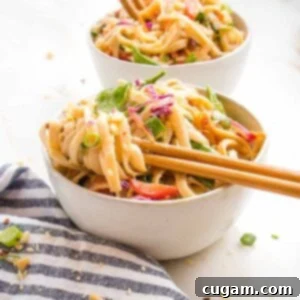
Cold Sesame Noodles with Tahini
Rate this Recipe
Pin Recipe
Equipment
-
Mini whisks
-
Colander
-
Spaghetti Server
-
Microplane
Ingredients
- 1 12-oz package rice noodles
- 2 Tablespoons toasted sesame oil
- 1 cup chopped red cabbage about ⅛ head
- 1 red bell pepper sliced thin
- 1 large carrot grated (about ½ cup)
- 4 oz. snow peas cut on bias
- 1 bunch green onions sliced thin
Tahini Sauce
- ½ cup creamy tahini
- 2 Tablespoons low sodium tamari
- 2 Tablespoons maple syrup
- 2 Tablespoons unseasoned rice vineagar
- 3 cloves garlic zested
- 2 teaspoons grated fresh ginger
- ¼ teaspoon crushed red pepper flakes
- 2-4 Tablespoons water
Garnish
- ¼ cup toasted sesame seeds
- ¼ cup crushed red pepper flakes
- ¼ cup sliced green onions
Instructions
-
Bring a large pot of salted water to boil over high heat. Stir in noodles and turn down the heat to barely boiling, so the water doesn’t spill over. Cook pasta according to package instructions. Grab ½ cup of the boiling water and set aside to use in the sauce. Start to check for doneness 2 minutes before the package says. When pasta is al dente, pour into a colander to drain and rinse with cool water.
-
While the pasta cooks, whisk together the sauce. Measure tahini into pyrex measuring cup. Add tamari, maple syrup and vinegar. Grate garlic and ginger over the cup. Sprinkle red pepper flakes over everything. Whisk well. Add enough pasta water to create a creamy sauce that is pourable.
-
Prep the veggies: Thinly slice cabbage, red bell pepper, snow peas and scallions. Cut ends of carrot and use a box grater to shred.
-
Transfer cooked noodles to a large colander and rinse with cold water. Then, add to large bowl and drizzle with sesame oil. Mix well to evenly coat all noodles.
-
Add cabbage, red pepper, snow peas, scallions and carrots to the bowl.
-
Whisk dressing again. If it has thickened too much, add 1-2 Tablespoons additional water. Pour on ½ the tahini sauce and mix well. Determine if additional sauce is desired and add.
-
Sesame noodles can be served at room temperature or cold. Add garnish when ready to serve. For spicy tahini noodles, add more crushed red pepper. Pass around some toasted sesame seeds and additional sliced green onions.
-
Refrigerate any leftovers in airtight containers.
Notes
Sauce: Instead of water, try adding a splash of sesame oil or chili oil to thin out the sauce. You will add flavor and create a richer sauce.
Garnish: Any chopped nuts, peanuts or seeds add great crunch and nutrition. Sprinkle on fresh herbs like cilantro, parsley, thai basil or oregano. A splash of sesame oil or chili oil to the
Nutrition
Note
The nutrition calculations were done using online tools. To obtain the most accurate representation of the nutritional information in any given recipe, you should calculate the nutritional information with the actual ingredients you used. You are ultimately responsible for ensuring that any nutritional information is accurate, complete and useful.
